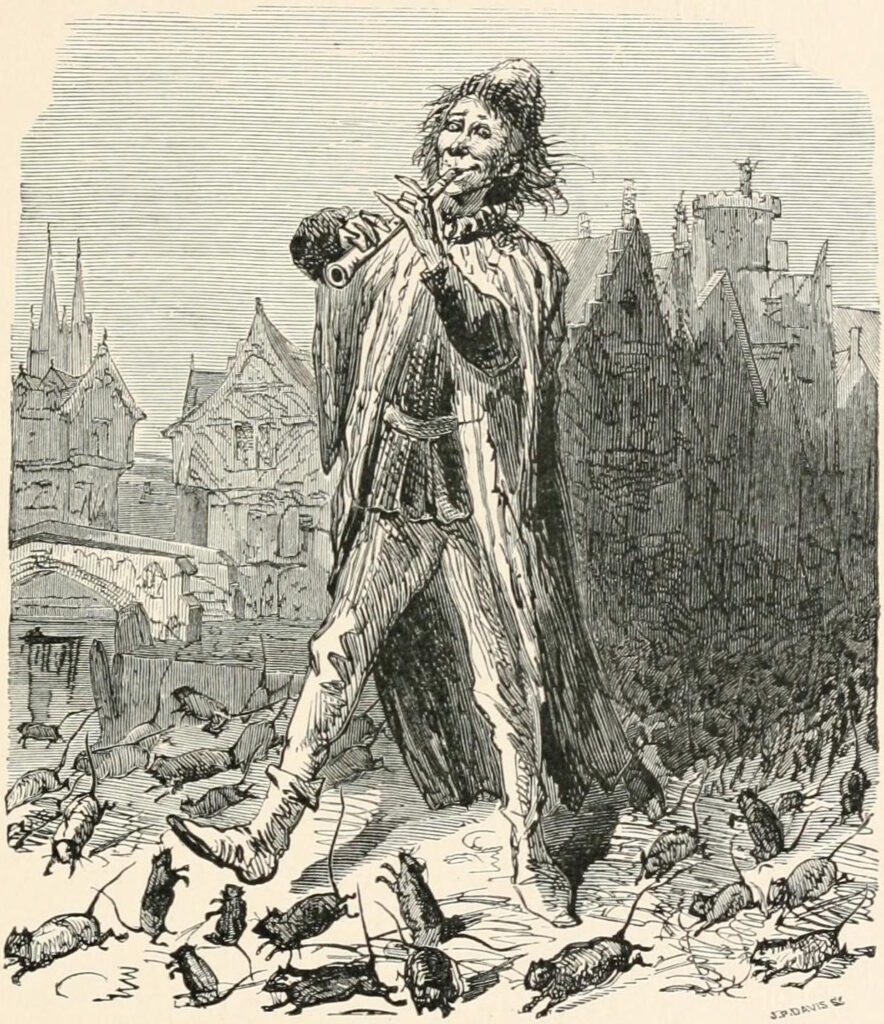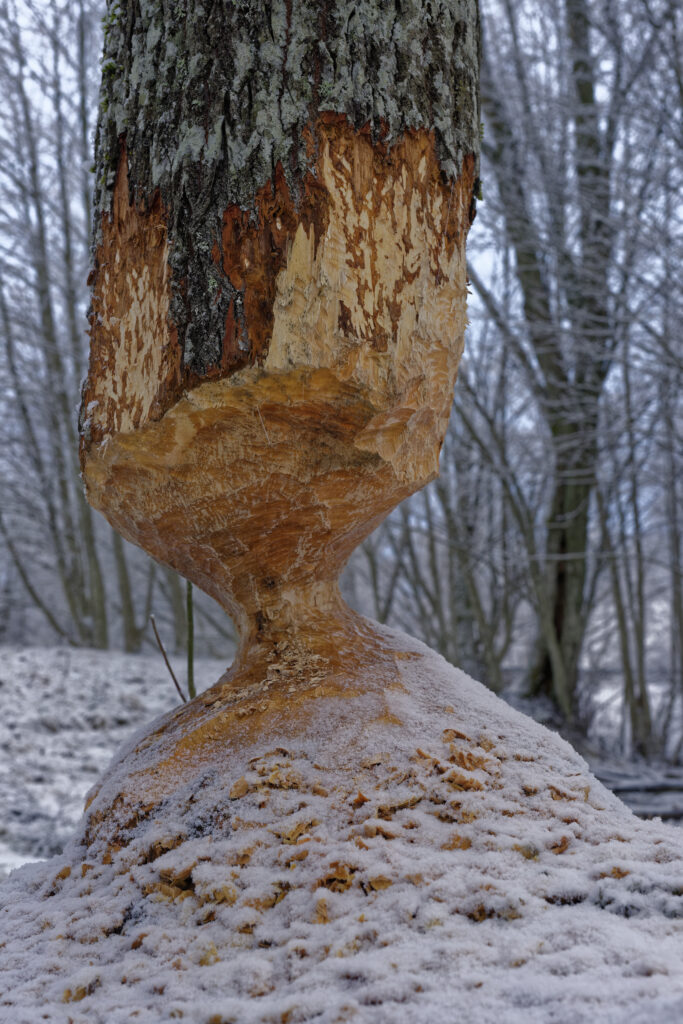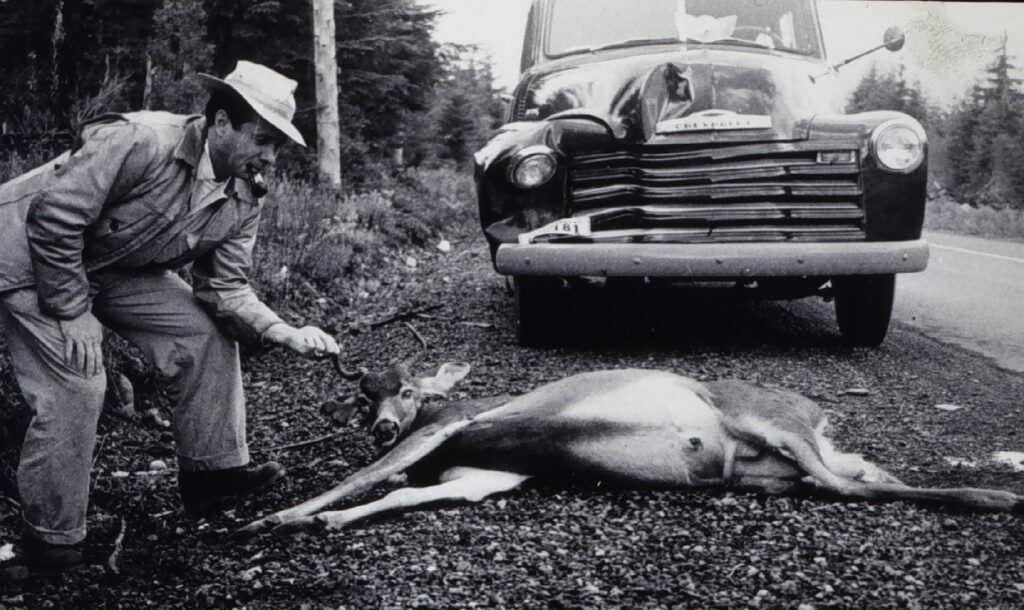Today commemorates the day when the Pied Piper of Hamelin performed his evil plot to lure the children away from their homes. Historians vacillate between two possible dates, but July 22, 1376, seems to hold the advantage. Hamelin is a town in Germany, where they call this tale the “Ratcatcher of Hamelin.” The day has evolved to the charming cause of celebrating the hard work of pest exterminators.

As you’ll remember, before the Pied Piper took the children away, he was called in to get rid of the city’s rats. He did so—by playing magical music on his flute—but then the fine folks of Hamelin refused to pay. So, he used his magic on the town’s children. But let’s focus on his ability to get rid of the rats. And that brings us to today’s topic—wildlife damage management.
Wildlife damage management (WDM) is an important part of conservation. It isn’t the first thing that conservation students think of as a career option, but it is where many find themselves later. Wildlife can be like the definition of a weed—a plant where it isn’t wanted—because sometimes humans and wildlife don’t mix well. As a consequence, the conflict needs to be handled. The definition of wildlife damage management is “an activity that tries to balance the needs of humans with the needs of wildlife, to the enhancement of both.”

While we praise the value of wildlife, our beloved animals also exact a cost on human needs for food, shelter and transportation. The federal agency in charge of WDM is the Wildlife Service branch of the Department of Agriculture’s Animal and Plant Health Inspection Service (APHIS). That agency estimated in 2001 that wildlife caused $944 million in damage to agricultural crops, so the figure is surely over $1 billion by now. More than half of all farmers and ranchers reported losses from wildlife. Most of that damage is caused by animals eating crops—a totally natural thing for both herbivores and carnivores to do.
A more specific and particular aspect of negative human-wildlife interaction is the car-animal collision, mostly involving deer. The National Highway Safety Administration estimates that about 1.5 million deer-related accidents occur annually, causing 175-200 human deaths, more than 10,000 injuries and over $1 billion in property damage. The highest frequency of animal-vehicle collisions is in West Virginia, where 1 in 38 drivers is likely to hit a deer every year. Montana, Pennsylvania, South Dakota and Iowa round out the top five.

WDM experts work mostly to reduce impacts in and around our homes. The Wisconsin Extension Service recommends several strategies, most of which do not involve killing animals. First, they suggest installing barriers to keep unwanted animals out—caps on chimneys, wire skirts around elevated decks, netting over berry patches. Second, if necessary, hire a WDM expert to capture a troublesome animal and relocate it elsewhere. Third, use repellents that animals don’t like to smell or taste, like hydrogen sulfide sprays for shrubs and flowers, or place objects outside to scare animals away.
But the more effective strategies are to change the way you interact with animals. Assess your property and remove items that attract animals, like brush piles, standing water, firewood stacked against a wall, trash containers where animals can find a meal. Plant flowers and shrubs that animals won’t eat (many lists are available). Don’t feed animals, intentionally (e.g., putting out food for those cute furry squirrels or chipmunks) or unintentionally (using bird feeders that other animals can get into, or putting bowls of pet food outside).
But always remember this—if you do engage a WDM professional, the modern day Pied Piper of Hamelin, be sure to pay her!
References:
Caryl-Sue. 2014. Jul 22, 1376 CE: Ratcatcher’s Day. National Geographic Resource Library. Available at: https://www.nationalgeographic.org/thisday/jul22/ratcatchers-day/. Accessed March 30, 2020.
Craven, Scott and David Drake. 2012. An Introduction to Wildlife Damage Management. Wisconsin Extension Service. Available at: http://wildlifedamage.uwex.edu/pdf/Introduction.pdf. Accessed March 30, 2020.
Dalbey, Beth. 2019. Deer Collisions Across The U.S.: The Odds of Hitting Animals. Patch, Oct 3, 2019. Available at: https://patch.com/us/across-america/deer-collisions-across-u-s-odds-hitting-animals. Accessed March 30, 2020.
Internet Center for Wildlife Damage Management. What is Wildlife Damage Management (WDM)? Available at: http://icwdm.org/. Accessed March 30, 2020.
US Department of Agriculture. 2012. Managing Wildlife Damage to Crops and Aquaculture. Available at: https://www.aphis.usda.gov/wildlife_damage/informational_notebooks/2012/Protecting_Agriculture_combined.pdf. Accessed March 30, 2020.
